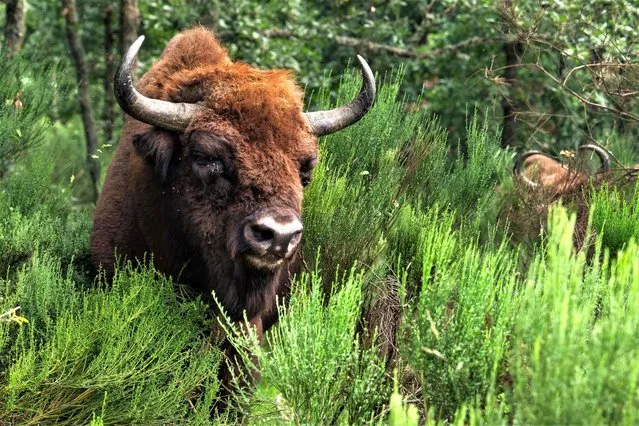
Bisons graze in the reserve of the European bison (Bison Bonasus) next to the village of San Cebrian de Muda, in the Palentina Mountain natural park, northern Spain, on July 3, 2023. The bison, like the “Garranos” horses in Portugal, is one of the animals contributing to the clearing of natural area and helping prevent wildfires on the Iberian Peninsula. (Photo by Cesar Manso/AFP Photo)
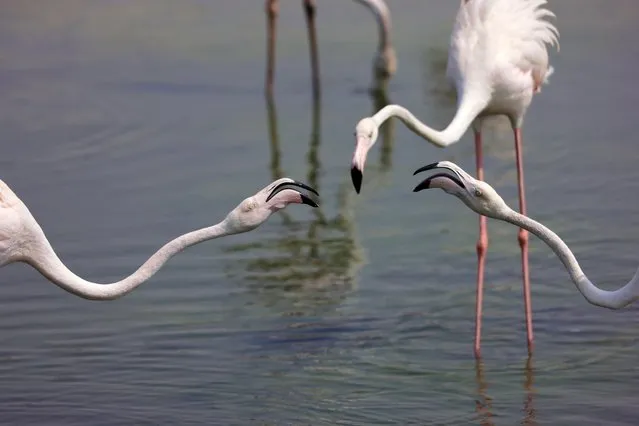
Flamingos gather in a pond at the Ras al-Khor Wildlife Sanctuary on the outskirts of Dubai on July 12, 2023. (Photo by Karim Sahib/AFP Photo)
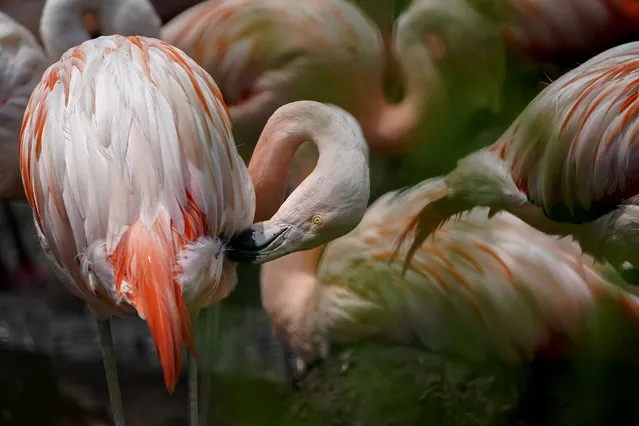
Chilean Flamingos groom each other at Lincoln Park Zoo, Tuesday, July 11, 2023, in Chicago. (Photo by Erin Hooley/AP Photo)
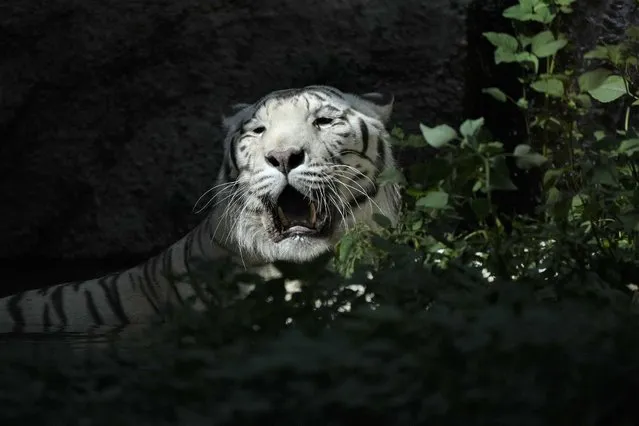
A White Bengal tiger rests in the shade on a hot day, in Rome's zoo, in Rome, Wednesday, July 19, 2023. Zookeepers at the Bioparco often give animals ice blocks with either fruit or meat inside on hot summer days. (Photo by Gregorio Borgia/AP Photo)
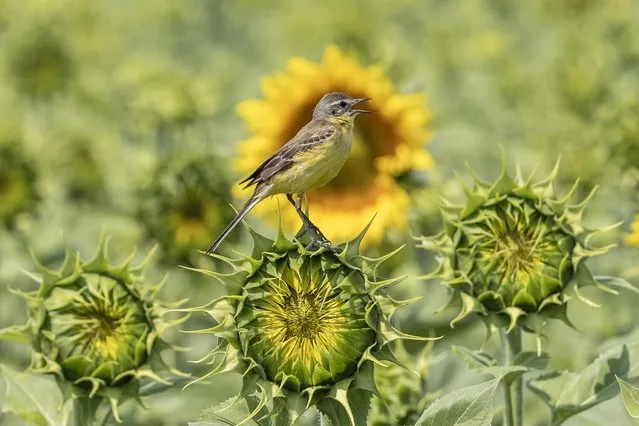
A yellow wagtail sits atop a sunflower in a field adjacent to the Dnipro cemetery in southern Ukraine in the second decade of July 2023. (Photo by Jack Hill/The Times)
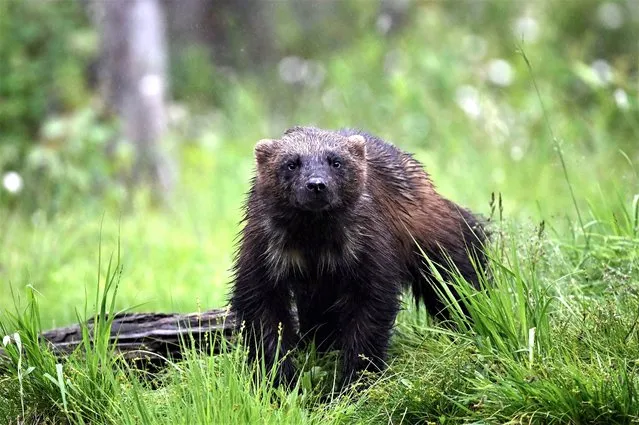
A wolverine (Gulo Gulo) looks for food in the Finnish taiga in Hukkajarvi area, Eastern Finland near Russian border, on July 4, 2023. (Photo by Olivier Morin/AFP Photo)
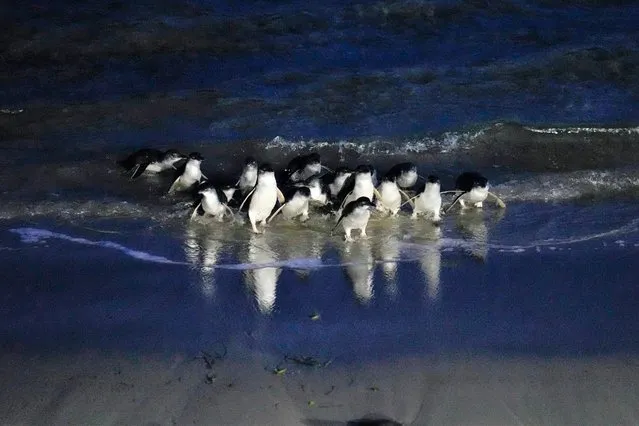
Little blue penguins, also known as their Maori name korora, exit the sea at the Royal Albatross Centre in Harington Point, a wildlife sanctuary near Dunedin, New Zealand, Wednesday, July 19, 2023. (Photo by Alessandra Tarantino/AP Photo)
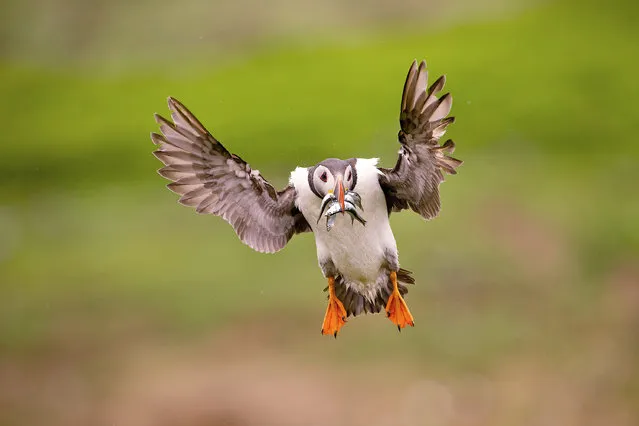
A puffin in the last decade of July 2023 enjoying a big supper before he flies off to the seas from the UK in August for nine long months. Skomer Island is just a mile off the beautiful Pembrokeshire coast and is renowned for Puffins who come to nest between April and JulyThis year there were around 42,000 puffins at Skomer Island. (Photo by Marc Freebrey/Media Drum Images)
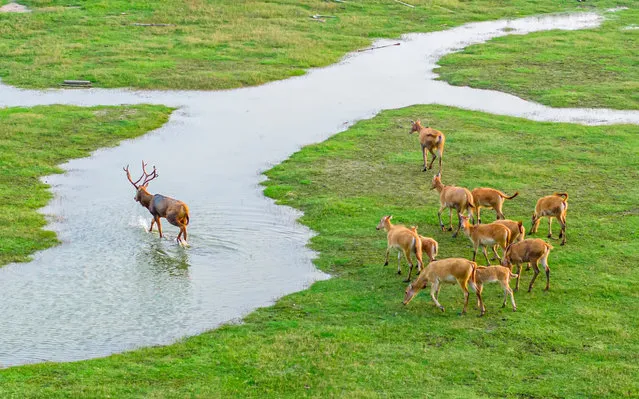
Elks play in the Yellow Sea Yeludang mudflat in Yancheng City, Jiangsu Province, China, July 9, 2023. (Photo by Costfoto/NurPhoto via Getty Images)
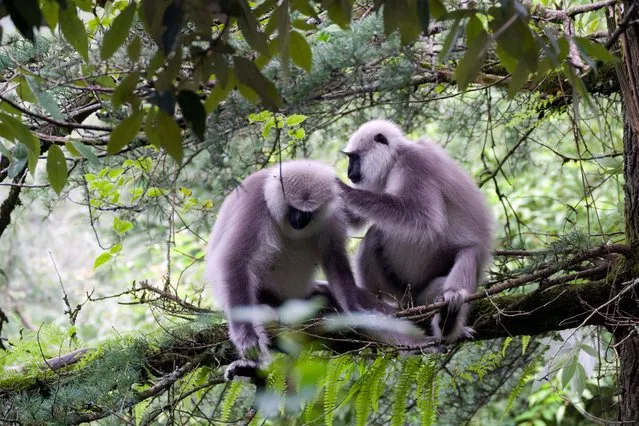
A langur grooms another in Dharamshala, India, Thursday, July 13, 2023. (Photo by Ashwini Bhatia/AP Photo)
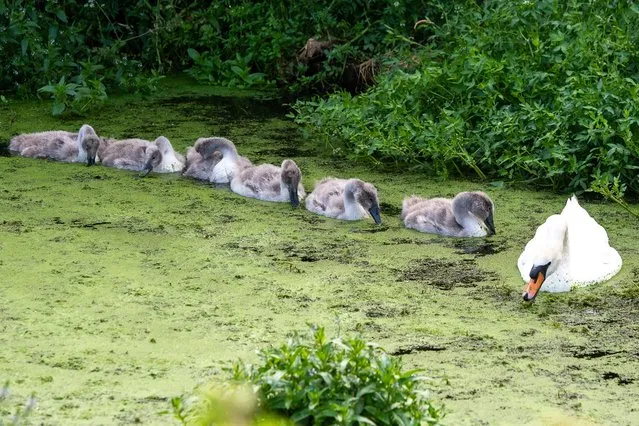
A mute swan and her six fluffy cygnets feed on duckweed on Roundmoor Ditch by Dorney, Buckinghamshire, UK on July 2, 2023. (Photo by Maureen McLean/Rex Features/Shutterstock)
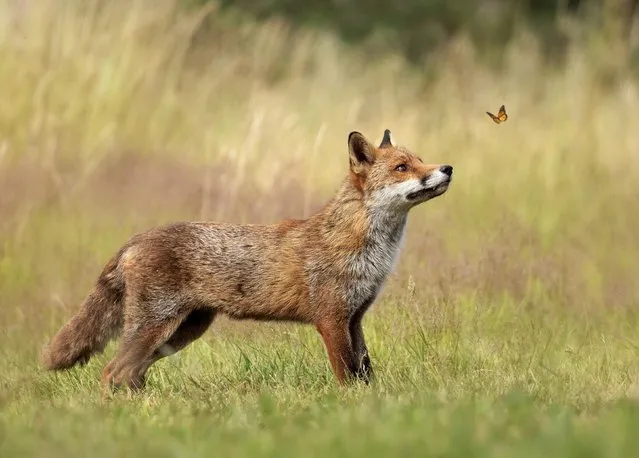
As if pulled from a Disney film, a fox is mesmerised by a butterfly hovering in front of its nose in a field in Taplow, Berkshire, South East England in the second decade of July 2023. (Photo by Ann Aveyard/Animal News Agency)
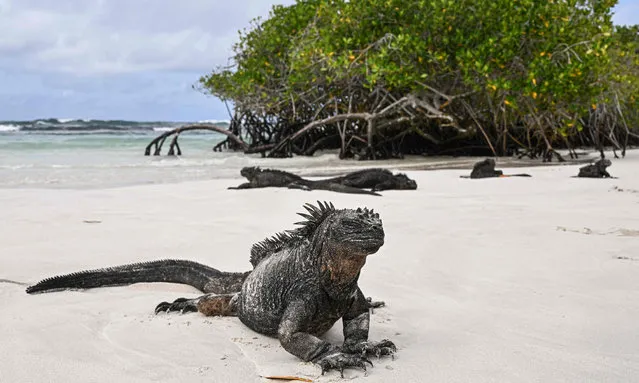
A marine iguana (Amblyrhynchus cristatus) is seen in Tortuga Bay at Santa Cruz Island, part of the Galapagos archipelago in Ecuador, on May 26, 2023. Unusually warm for this time of year, the waters of the Pacific carry a warning to the beaches: El Niño has already begun and could be the most intense phenomenon in decades and a sentence of starvation and death for the black marine iguanas of Ecuador's Galapagos archipelago. (Photo by Ernesto Benavides/AFP Photo)
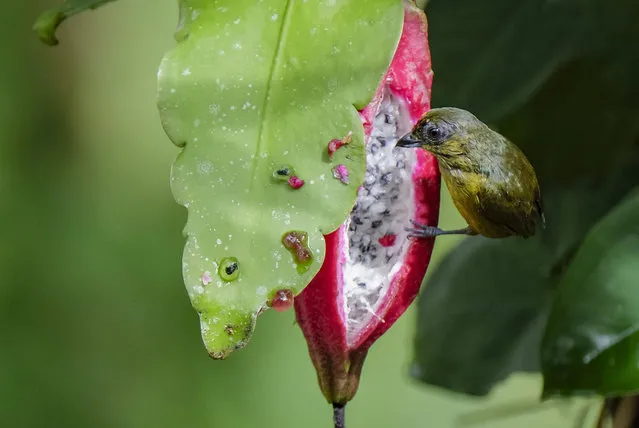
A warbler bird is seen inside the La Selva biological reserve in the Sarapiqui area, northeast of San Jose, Costa Rica, 27 June 2023. Costa Rica, which is home to around 5 percent of the world's biodiversity, is one of the few countries that has managed to reverse deforestation in the last 30 years and expand its forest cover, thanks largely to state programs that recognize the contribution to the conservation of the environment made by the owners of farms and land. (Photo by Jeffrey Arguedas/EPA/EFE)
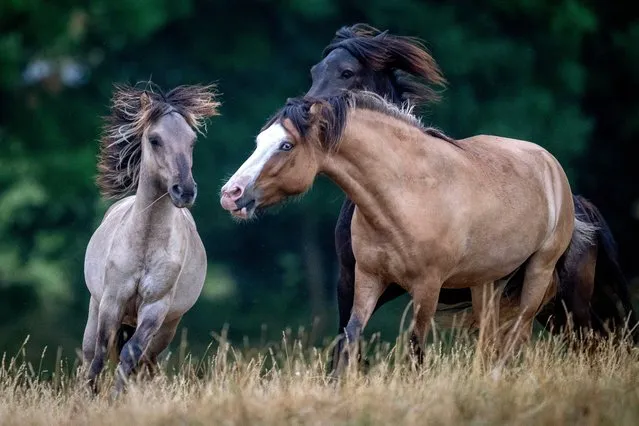
Icelandic stallions run in their paddock at a stud farm in Wehrheim near Frankfurt, Germany, Friday, July 21, 2023. (Photo by Michael Probst/AP Photo)
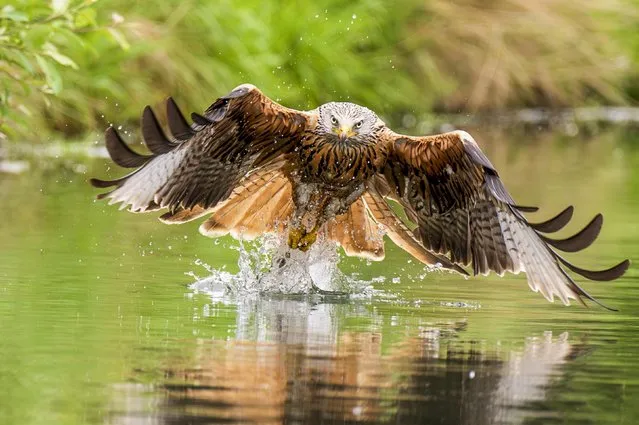
A red kite failed to catch its prey at Horn Mill Trout Farm in Oakham, Leicestershire, East Midlands of England in the first decade of July 2023. (Photo by Andy Wilson/Solent News)
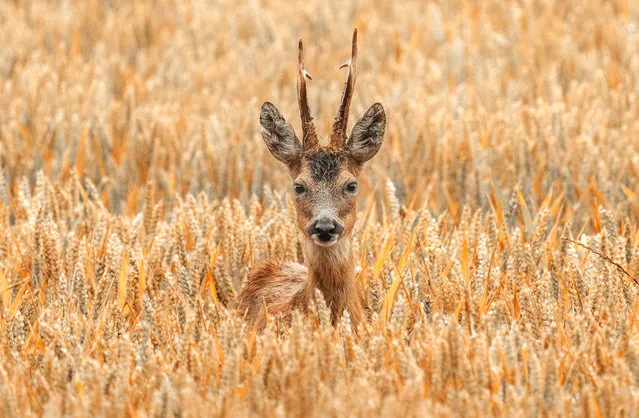
A roe dear walks through a wheat field which is nearly ready to harvest at Gosforth Nature Reserve near Newcastle, Tyne and Wear, UK at the weekend, July 22, 2023. (Photo by Ian Sproat/Picture Exclusive)
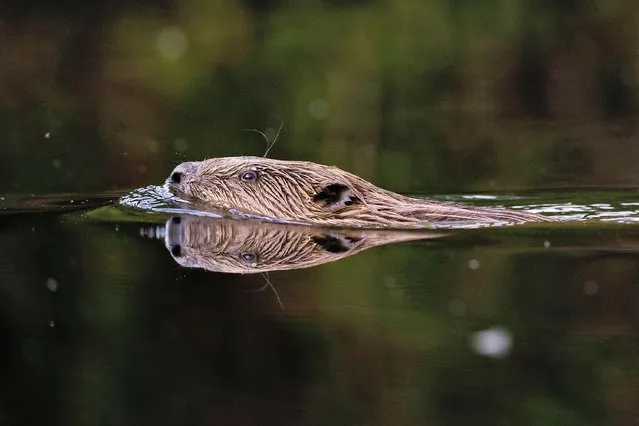
A beaver swims along a river on July 20, 2023 in Kent, England. The re-introduction of beavers into managed estates and private land across the UK has gathered momentum over the last few years. In 2002, two beaver families were released into a contained colony at Ham Fen nature reserve in Kent. Subsequent flooding of the reserve led to their escape and combination of these escapees and rumoured ‘illegal’ beaver releases into the river systems has led to an established population that now live in the river Stour catchment area. Proponents of re-wilding projects have welcomed the beavers pointing to the environmental benefits, but the trend is concerning farmers who worry about the negative impacts the animals could have on their land. Beavers shape their environment, felling trees which opens woodland canopy, increasing biodiversity, but they can also be damaging if the wrong trees are felled. As well as building lodges across rivers beavers also burrow into riverbanks with the entrances submerged, digging upwards into the bank creating chambers above water level along the side of riverbanks, often under farmers’ fields. There have been instances of farm machinery falling through fields into burrows that can lie just under the surface. Assessing and managing these conflicting views is the East Kent Beaver Advisory Group, (EKBAG). Following meetings with farmers the results of a census to ascertain beaver numbers on the Stour and the suitability of where their habitats are located, are being collated. The animals gained legal protection in the UK in October 2022, however ministers and MPs, including MP Sir Robert Goodwill, chair of DEFRA, have been urged to review their protected status in England. Mr Goodwill is calling for something similar to the “German model” which would allow local communities to control beavers without unnecessary bureaucracy. (Photo by Dan Kitwood/Getty Images)
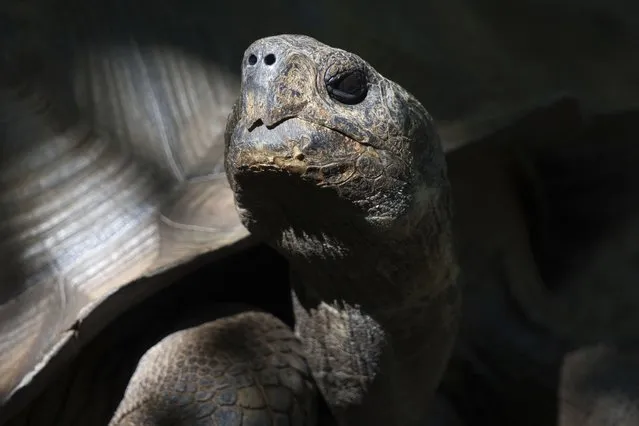
A Galapagos tortoise looks out of its enclosure at the Cincinnati Zoo and Botanical Garden in Cincinnati Friday, July 7, 2023. (Photo by Jon Gambrell/AP Photo)
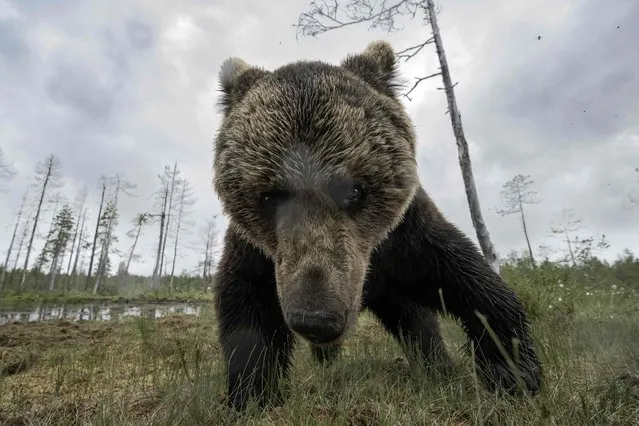
A brown bear (Ursus arctos) looks for food in the Finnish taiga in Hukkajarvi area, Eastern Finland, near Russian border, on July 4, 2023. (Photo by Olivier Morin/AFP Photo)
30 Jul 2023 03:59:00,
post received
0 comments
